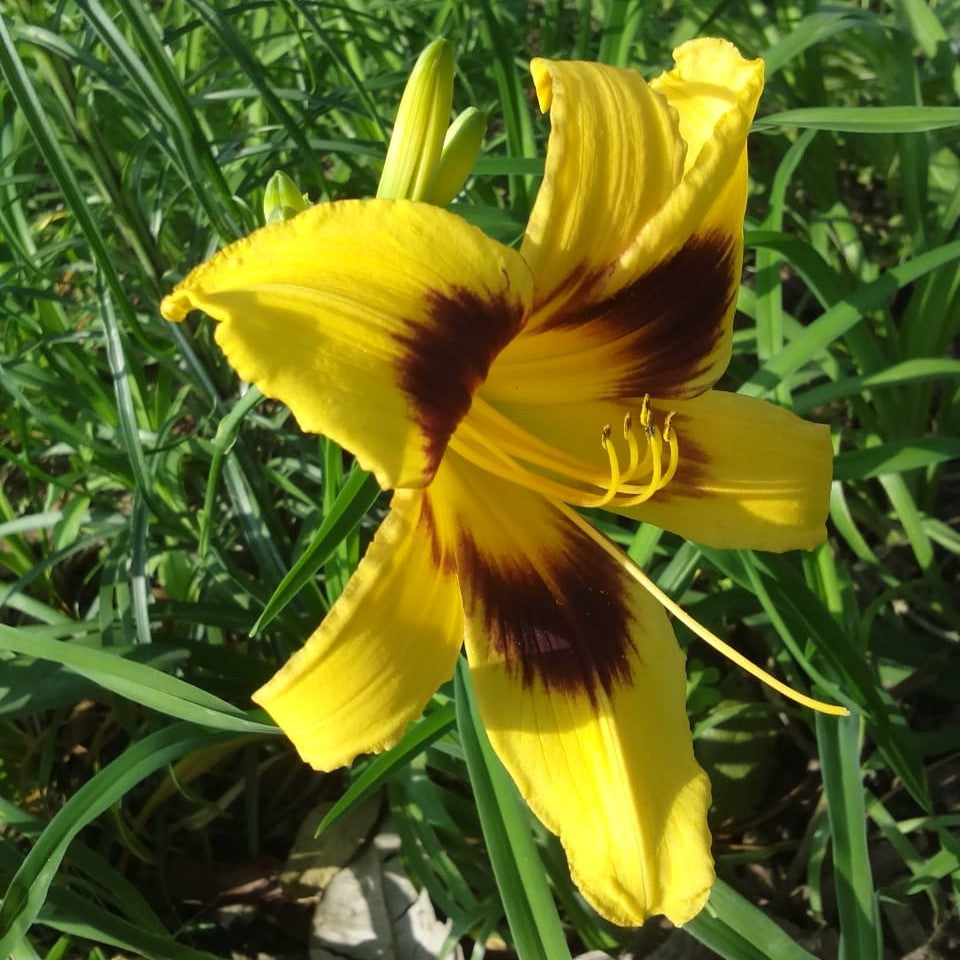Daylily 'El Desperado'
Family
Asphodelaceae
Origin
Asea
Description
This herbaceous perennial plant consists of a rosette of basal leaves and flowering stalks about 3-6' tall. The basal leaves are linear with parallel venation and hairless, tapering gradually to a sword-like point. They have a tendency to bend down and outward around the middle, and are somewhat floppy in appearance. From the center of the rosette, there develops one or more stout flowering stalks that are held erect and are usually much taller than the leaves. Each stalk is hairless and largely naked, except for a few green bracts along its length. It is largely unbranched, except near the apex, where there is a panicle consisting of a few small clusters of flowers
Hemerocallis (daylilies) produce elegant, usually trumpet-like blooms in summer and are easy to grow in many gardens. Individual flowers are short-lived but each plant produces many blooms, so displays will last for weeks.
'El Desperado' daylily, has large, mustard yellow flowers with a bold and contrasting purple eye above a green throat with green foliage. It adds an extremely high bud count and an extended 16-hour bloom time that lets you enjoy blooms in the late afternoon and evening.
Daylilies attracts Butterflies & hummingbirds.
Hemerocallis El Desperado bulbs produce distinctive daylilies featuring bright yellow petals accented by purple eye zones. Blooming occurs from April to June in plains and from May to July in hilly regions. Plant bulbs between February and April in plains or March to May in hills.
Environment
Hemerocallis have simple demands -- lots of sun and an occasional drink from the garden hose. These hardy perennials will tolerate a wide range of soil conditions and have few insect or disease problems. Give them a little slow-release granular fertilizer in spring when new growth appears and then leave them alone. Mulch daylilies to keep grassy weeds at bay that can be hard to distinguish next to the plant's narrow foliage.
One of the most indestructible garden plants, these easily grown plants will grow in almost any situations except for heavy shade and soil that is permenantly wet.
Landscape Use
Planted singly or en masse, this outstanding daylily is sure to make a huge visual impact in the landscape !




















